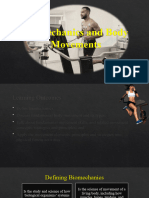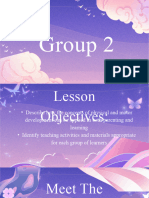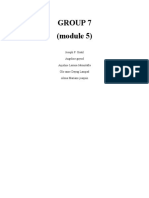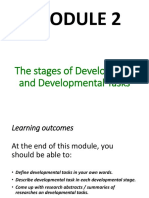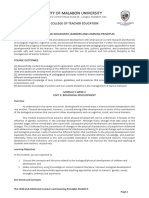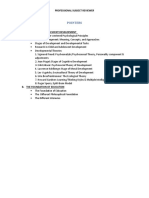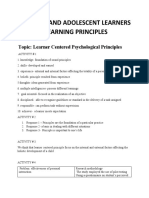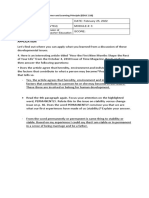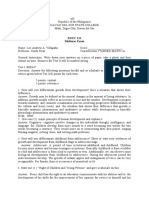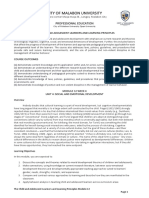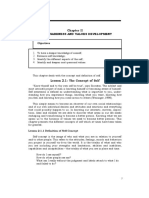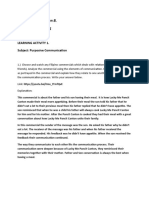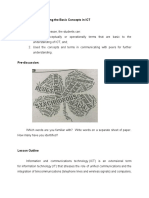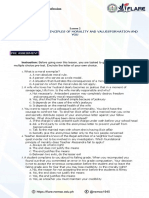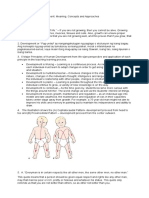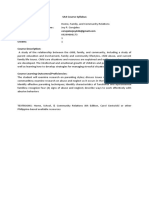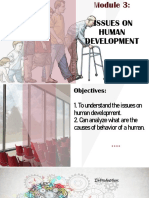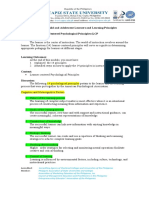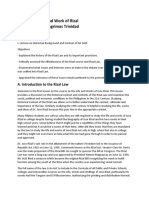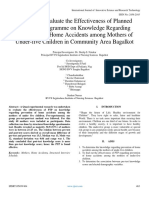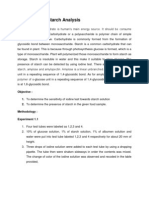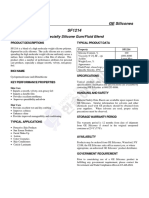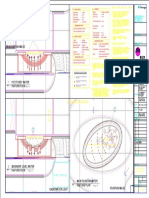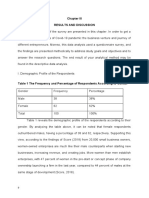0% found this document useful (0 votes)
999 views10 pagesLearner-Centered Principles Guide
This document provides an overview of Module 1 of an education course on child and adolescent learners and learning principles. It discusses the 14 learner-centered psychological principles developed by the American Psychological Association, which are grouped into cognitive/metacognitive factors and motivational/affective factors. The principles address the nature of learning, goals, knowledge construction, thinking strategies, context of learning, motivation, effort, development, social influences, individual differences, and standards/assessment. The module aims to explain the principles and how to apply them in instruction.
Uploaded by
Shaira B. Anonat CoedCopyright
© © All Rights Reserved
We take content rights seriously. If you suspect this is your content, claim it here.
Available Formats
Download as DOC, PDF, TXT or read online on Scribd
0% found this document useful (0 votes)
999 views10 pagesLearner-Centered Principles Guide
This document provides an overview of Module 1 of an education course on child and adolescent learners and learning principles. It discusses the 14 learner-centered psychological principles developed by the American Psychological Association, which are grouped into cognitive/metacognitive factors and motivational/affective factors. The principles address the nature of learning, goals, knowledge construction, thinking strategies, context of learning, motivation, effort, development, social influences, individual differences, and standards/assessment. The module aims to explain the principles and how to apply them in instruction.
Uploaded by
Shaira B. Anonat CoedCopyright
© © All Rights Reserved
We take content rights seriously. If you suspect this is your content, claim it here.
Available Formats
Download as DOC, PDF, TXT or read online on Scribd
/ 10



